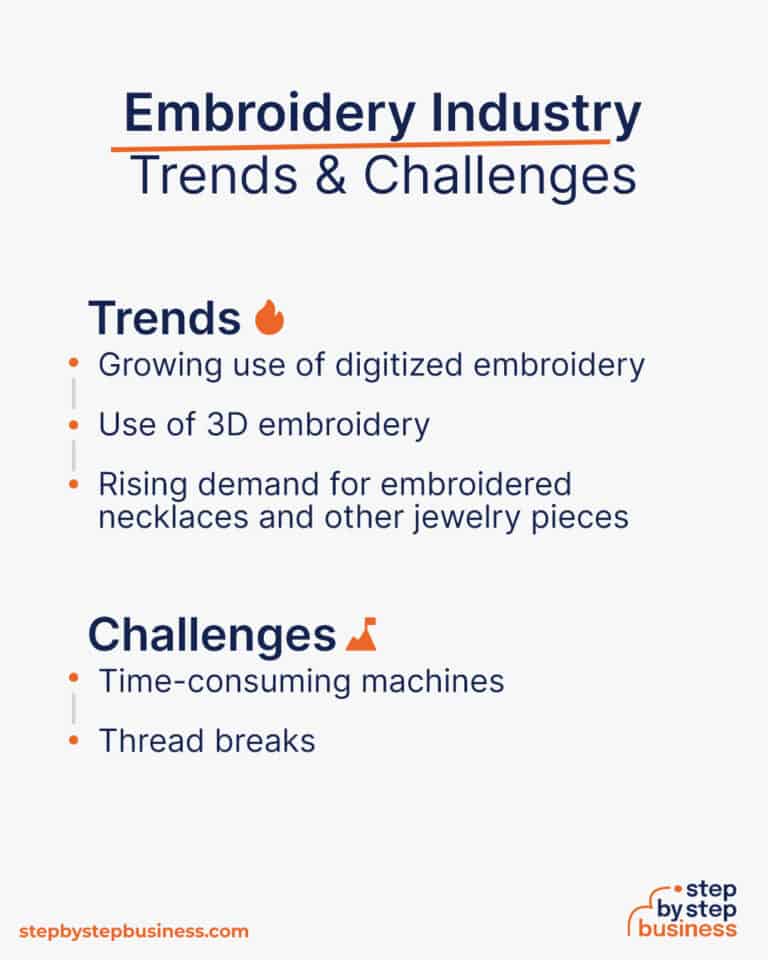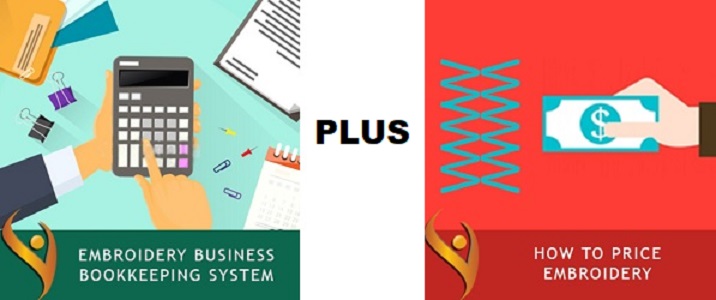Unraveling the World of Embroidery: Understanding the Basics
Embroidery is an ancient art form that has been a cornerstone of human expression and creativity for thousands of years. From intricate hand-stitched designs to modern computerized embroidery, this versatile craft has evolved significantly over time. As a prospective entrepreneur, understanding the basics of embroidery is crucial for starting a successful business. In this article, we will delve into the world of embroidery, exploring its history, current market demand, and the different types of embroidery that can help you establish a thriving business.
The history of embroidery dates back to ancient civilizations, where it was used to adorn clothing, home decor, and other textiles. Over time, embroidery techniques and tools have evolved, giving rise to various forms of embroidery, including hand embroidery, machine embroidery, and computerized embroidery. Hand embroidery is a traditional technique that involves stitching designs onto fabric using a needle and thread. Machine embroidery, on the other hand, uses specialized machines to create intricate designs quickly and efficiently. Computerized embroidery takes it a step further, using software to design and stitch complex patterns with precision.
When it comes to starting an embroidery business, understanding the current market demand is vital. The embroidery market is growing rapidly, driven by increasing demand for customized apparel, home decor, and accessories. According to industry reports, the global embroidery market is expected to reach $10.3 billion by 2025, growing at a CAGR of 4.5%. This presents a lucrative opportunity for entrepreneurs to tap into the market and establish a successful business.
As you consider starting an embroidery business, it’s essential to understand the different types of embroidery that can help you cater to various market segments. For instance, custom apparel embroidery is a popular choice for businesses, sports teams, and individuals looking for personalized clothing. Home decor embroidery, on the other hand, involves creating intricate designs for home textiles, such as pillowcases, table runners, and wall hangings. Accessories embroidery is another niche that involves creating customized designs for bags, hats, and other accessories.
By understanding the basics of embroidery, including its history, current market demand, and different types of embroidery, you can establish a solid foundation for your business. In the next section, we will explore the importance of defining your niche and identifying your target market to create a unique selling proposition that sets your business apart from the competition.
Defining Your Niche: Identifying Your Target Market and Unique Selling Proposition
When starting an embroidery business, it’s essential to define your niche and identify your target market. A niche is a specific area of the market that your business can specialize in, such as custom apparel, home decor, or accessories. By focusing on a specific niche, you can differentiate your business from competitors and establish a unique selling proposition (USP) that sets you apart.
To define your niche, consider the following factors:
- Market demand: What types of embroidery products are in high demand?
- Competition: Who are your competitors, and how can you differentiate your business?
- Skills and expertise: What are your strengths and weaknesses in embroidery?
- Target market: Who is your ideal customer, and what are their needs and preferences?
Once you’ve defined your niche, you can create a target market profile. This profile should include demographic information, such as age, location, and income level, as well as psychographic information, such as interests, values, and lifestyle. By understanding your target market, you can create products and marketing strategies that meet their needs and preferences.
A unique selling proposition (USP) is a statement that defines your business and differentiates it from competitors. Your USP should be clear, concise, and compelling, and it should communicate the value that your business offers to customers. For example, “We specialize in custom embroidery for small businesses, providing high-quality products and exceptional customer service.”
When creating your USP, consider the following factors:
- What sets your business apart from competitors?
- What are your unique strengths and weaknesses?
- What are the needs and preferences of your target market?
- How can you communicate the value of your business to customers?
By defining your niche and creating a USP, you can establish a strong foundation for your embroidery business and differentiate yourself from competitors. In the next section, we’ll discuss the essential equipment and supplies needed to start an embroidery business.
Setting Up Your Embroidery Business: Essential Equipment and Supplies
When starting an embroidery business, it’s essential to have the right equipment and supplies to produce high-quality products. The type of equipment and supplies you need will depend on the type of embroidery you plan to do, as well as the size and scope of your business. In this section, we’ll discuss the essential equipment and supplies you’ll need to get started.
Embroidery Machines: The first piece of equipment you’ll need is an embroidery machine. There are several types of embroidery machines available, including single-head, multi-head, and computerized machines. Single-head machines are ideal for small businesses or hobbyists, while multi-head machines are better suited for larger businesses or high-volume production. Computerized machines offer advanced features such as automatic threading and tension control.
Embroidery Software: In addition to an embroidery machine, you’ll also need embroidery software to design and edit your embroidery files. There are several types of embroidery software available, including specialized software for specific types of embroidery, such as appliqué or quilting. Look for software that is compatible with your embroidery machine and offers features such as automatic threading and tension control.
Threads and Stabilizing Materials: Embroidery threads and stabilizing materials are essential for producing high-quality embroidery. Look for high-quality threads that are specifically designed for embroidery, and choose stabilizing materials that are suitable for the type of fabric you’ll be working with. Common stabilizing materials include cut-away, tear-away, and water-soluble stabilizers.
Other Essential Supplies: In addition to embroidery machines, software, threads, and stabilizing materials, you’ll also need other essential supplies such as scissors, hoops, and needles. Look for high-quality supplies that are specifically designed for embroidery, and choose supplies that are suitable for the type of fabric you’ll be working with.
Tips for Choosing the Right Equipment and Supplies: When choosing the right equipment and supplies for your embroidery business, consider the following factors:
- Quality: Look for high-quality equipment and supplies that are specifically designed for embroidery.
- Compatibility: Make sure the equipment and supplies you choose are compatible with each other and with your embroidery machine.
- Price: Consider the cost of the equipment and supplies, and choose options that fit within your budget.
- Brand reputation: Choose equipment and supplies from reputable brands that offer good customer support and warranty.
By investing in the right equipment and supplies, you can produce high-quality embroidery products that will help you build a successful business. In the next section, we’ll discuss the importance of developing a comprehensive business plan to help you achieve your business goals.
Developing a Business Plan: Creating a Roadmap for Success
A business plan is a comprehensive document that outlines the goals, objectives, and strategies for your embroidery business. It serves as a roadmap for success, helping you navigate the challenges and opportunities that come with starting a new business. In this section, we’ll discuss the importance of creating a business plan and provide a template or outline to help you get started.
Why Create a Business Plan?
A business plan is essential for any new business, including an embroidery business. It helps you clarify your business idea, identify potential problems, and develop strategies for success. A business plan also serves as a tool for securing funding, attracting investors, and measuring progress.
Business Plan Template:
A business plan typically includes the following components:
- Executive Summary: A brief overview of your business, including your mission statement, products or services, target market, and goals.
- Company Description: A detailed description of your business, including its history, structure, and ownership.
- Market Analysis: An analysis of your target market, including demographics, needs, and trends.
- Products or Services: A description of the products or services you offer, including their features, benefits, and pricing.
- Marketing and Sales: A description of your marketing and sales strategies, including your sales channels, pricing, and promotional activities.
- Financial Projections: Financial projections, including your income statement, balance sheet, and cash flow statement.
- Management and Organization: A description of your business’s management and organizational structure, including your management team, staffing, and operational plan.
Tips for Creating a Business Plan:
When creating a business plan, keep the following tips in mind:
- Keep it concise: Aim for a business plan that is 10-20 pages in length.
- Make it specific: Avoid general statements and focus on specific details.
- Use clear language: Avoid using technical jargon or complex terminology.
- Update it regularly: Review and update your business plan regularly to reflect changes in your business.
By creating a comprehensive business plan, you can set your embroidery business up for success and achieve your goals. In the next section, we’ll discuss the importance of building a professional online presence, including creating a website, social media accounts, and email marketing campaigns.
Building Your Brand: Creating a Professional Online Presence
In today’s digital age, having a professional online presence is crucial for any business, including an embroidery business. A well-designed website, social media accounts, and email marketing campaigns can help you reach a wider audience, build your brand, and drive sales. In this section, we’ll discuss the importance of building a professional online presence and provide tips on how to create engaging content and build a strong brand identity.
Why Build a Professional Online Presence?
A professional online presence can help you establish credibility, build trust with your customers, and differentiate yourself from competitors. It can also help you reach a wider audience, increase brand awareness, and drive sales. In addition, a professional online presence can help you stay competitive in the market and adapt to changing market conditions.
Creating a Website:
A website is a crucial component of any online presence. It provides a platform for you to showcase your products, services, and brand identity. When creating a website, consider the following tips:
- Choose a domain name that is easy to remember and relevant to your business.
- Select a website builder that is user-friendly and offers a range of templates and design options.
- Create high-quality content that is engaging, informative, and optimized for search engines.
- Use high-quality images and graphics to showcase your products and services.
- Make sure your website is mobile-friendly and easy to navigate.
Building Social Media Accounts:
Social media accounts can help you reach a wider audience, build your brand, and drive sales. When building social media accounts, consider the following tips:
- Choose social media platforms that are relevant to your business and target audience.
- Create high-quality content that is engaging, informative, and optimized for search engines.
- Use high-quality images and graphics to showcase your products and services.
- Engage with your followers by responding to comments and messages.
- Use social media analytics to track your performance and adjust your strategy accordingly.
Email Marketing Campaigns:
Email marketing campaigns can help you reach a wider audience, build your brand, and drive sales. When creating email marketing campaigns, consider the following tips:
- Create high-quality content that is engaging, informative, and optimized for search engines.
- Use high-quality images and graphics to showcase your products and services.
- Segment your email list to target specific audiences and increase engagement.
- Use email marketing analytics to track your performance and adjust your strategy accordingly.
- Make sure your emails are mobile-friendly and easy to read.
By building a professional online presence, you can establish credibility, build trust with your customers, and drive sales. In the next section, we’ll discuss various marketing and sales strategies for reaching your target market, including search engine optimization (SEO), paid advertising, and trade shows.
Marketing and Sales Strategies: Reaching Your Target Market
Once you have established your embroidery business, it’s essential to develop effective marketing and sales strategies to reach your target market. In this section, we’ll discuss various marketing and sales strategies that can help you promote your business and attract new customers.
Search Engine Optimization (SEO):
SEO is a crucial marketing strategy that can help you increase your online visibility and attract more customers to your website. By optimizing your website for search engines, you can improve your ranking and drive more traffic to your site. Here are some SEO tips to get you started:
- Conduct keyword research to identify relevant keywords and phrases.
- Optimize your website’s content, including page titles, descriptions, and headings.
- Use header tags to structure your content and highlight important keywords.
- Optimize your images by adding alt tags and descriptive text.
- Build high-quality backlinks from relevant websites and directories.
Paid Advertising:
Paid advertising is another effective marketing strategy that can help you reach your target market. Here are some paid advertising options to consider:
- Google Ads: Target specific keywords and demographics with Google Ads.
- Facebook Ads: Target specific audiences and interests with Facebook Ads.
- Print Ads: Advertise in local print publications, such as newspapers and magazines.
- Trade Show Ads: Advertise at trade shows and events related to your industry.
Trade Shows and Events:
Trade shows and events are an excellent way to showcase your products and services and connect with potential customers. Here are some tips for making the most of trade shows and events:
- Research the event and ensure it’s relevant to your industry.
- Create eye-catching displays and promotional materials.
- Prepare a clear and concise sales pitch.
- Follow up with leads and contacts after the event.
Marketing Materials and Sales Pitches:
Effective marketing materials and sales pitches are essential for promoting your business and attracting new customers. Here are some tips for creating effective marketing materials and sales pitches:
- Create clear and concise marketing materials, such as brochures and business cards.
- Develop a strong sales pitch that highlights your unique selling proposition (USP).
- Use storytelling techniques to engage and persuade potential customers.
- Practice your sales pitch to ensure you’re confident and effective.
By implementing these marketing and sales strategies, you can effectively reach your target market and attract new customers to your embroidery business. In the next section, we’ll discuss the importance of managing your finances effectively, including pricing strategies, invoicing, and bookkeeping.
Managing Your Finances: Pricing, Invoicing, and Bookkeeping
Effective financial management is crucial for the success of any business, including an embroidery business. In this section, we’ll discuss the importance of pricing strategies, invoicing, and bookkeeping, and provide tips on how to manage your finances effectively.
Pricing Strategies:
Pricing is a critical aspect of any business, and it’s essential to get it right. Here are some tips for creating a pricing strategy that works for your embroidery business:
- Research your competition: Understand what your competitors are charging for similar products and services.
- Calculate your costs: Factor in the cost of materials, labor, and overheads when determining your prices.
- Consider your target market: Price your products and services according to the value they offer to your target market.
- Be flexible: Be prepared to adjust your prices in response to changes in the market or your business.
Invoicing:
Invoicing is an essential part of managing your finances, and it’s crucial to get it right. Here are some tips for creating effective invoices:
- Use a clear and concise format: Make sure your invoices are easy to read and understand.
- Include all necessary information: Make sure your invoices include all the necessary information, such as your business name, address, and contact details.
- Use a professional tone: Use a professional tone in your invoices to build trust with your customers.
- Follow up: Follow up with your customers to ensure they receive and pay their invoices on time.
Bookkeeping:
Bookkeeping is the process of recording and managing your business’s financial transactions. Here are some tips for effective bookkeeping:
- Use a bookkeeping system: Use a bookkeeping system, such as QuickBooks or Xero, to manage your financial transactions.
- Record all transactions: Record all your business’s financial transactions, including income, expenses, and invoices.
- Reconcile your accounts: Reconcile your accounts regularly to ensure accuracy and detect any errors.
- Review your financial statements: Review your financial statements regularly to understand your business’s financial performance.
By following these tips, you can effectively manage your finances and ensure the success of your embroidery business. In the next section, we’ll discuss strategies for scaling your business, including outsourcing, hiring employees, and expanding product lines.
Scaling Your Business: Strategies for Growth and Expansion
As your embroidery business grows, it’s essential to have strategies in place for scaling and expansion. In this section, we’ll discuss various strategies for managing growth, maintaining quality, and adapting to changing market conditions.
Outsourcing:
Outsourcing is a common strategy for scaling an embroidery business. By outsourcing certain tasks or processes, you can free up time and resources to focus on high-priority tasks and grow your business. Here are some tips for outsourcing effectively:
- Identify tasks that can be outsourced: Determine which tasks or processes can be outsourced, such as embroidery production, shipping, or customer service.
- Research potential partners: Research potential partners or vendors that can provide the services you need.
- Establish clear communication: Establish clear communication channels with your partners or vendors to ensure smooth operations.
- Monitor quality: Monitor the quality of the services or products provided by your partners or vendors.
Hiring Employees:
Hiring employees is another strategy for scaling an embroidery business. By hiring employees, you can increase production capacity, improve efficiency, and provide better customer service. Here are some tips for hiring employees effectively:
- Define job roles: Define clear job roles and responsibilities for each employee.
- Recruit qualified candidates: Recruit qualified candidates through job postings, referrals, or recruitment agencies.
- Provide training: Provide comprehensive training to ensure employees have the skills and knowledge needed to perform their job roles.
- Monitor performance: Monitor employee performance and provide feedback to ensure high-quality work.
Expanding Product Lines:
Expanding product lines is a strategy for scaling an embroidery business by offering new and diverse products to customers. Here are some tips for expanding product lines effectively:
- Conduct market research: Conduct market research to identify new product opportunities and trends.
- Develop new products: Develop new products that meet customer needs and preferences.
- Test and refine: Test and refine new products to ensure quality and customer satisfaction.
- Market new products: Market new products through various channels, such as social media, email marketing, and trade shows.
By implementing these strategies, you can effectively scale your embroidery business and achieve long-term success. Remember to stay focused on quality, customer service, and innovation to maintain a competitive edge in the market.






